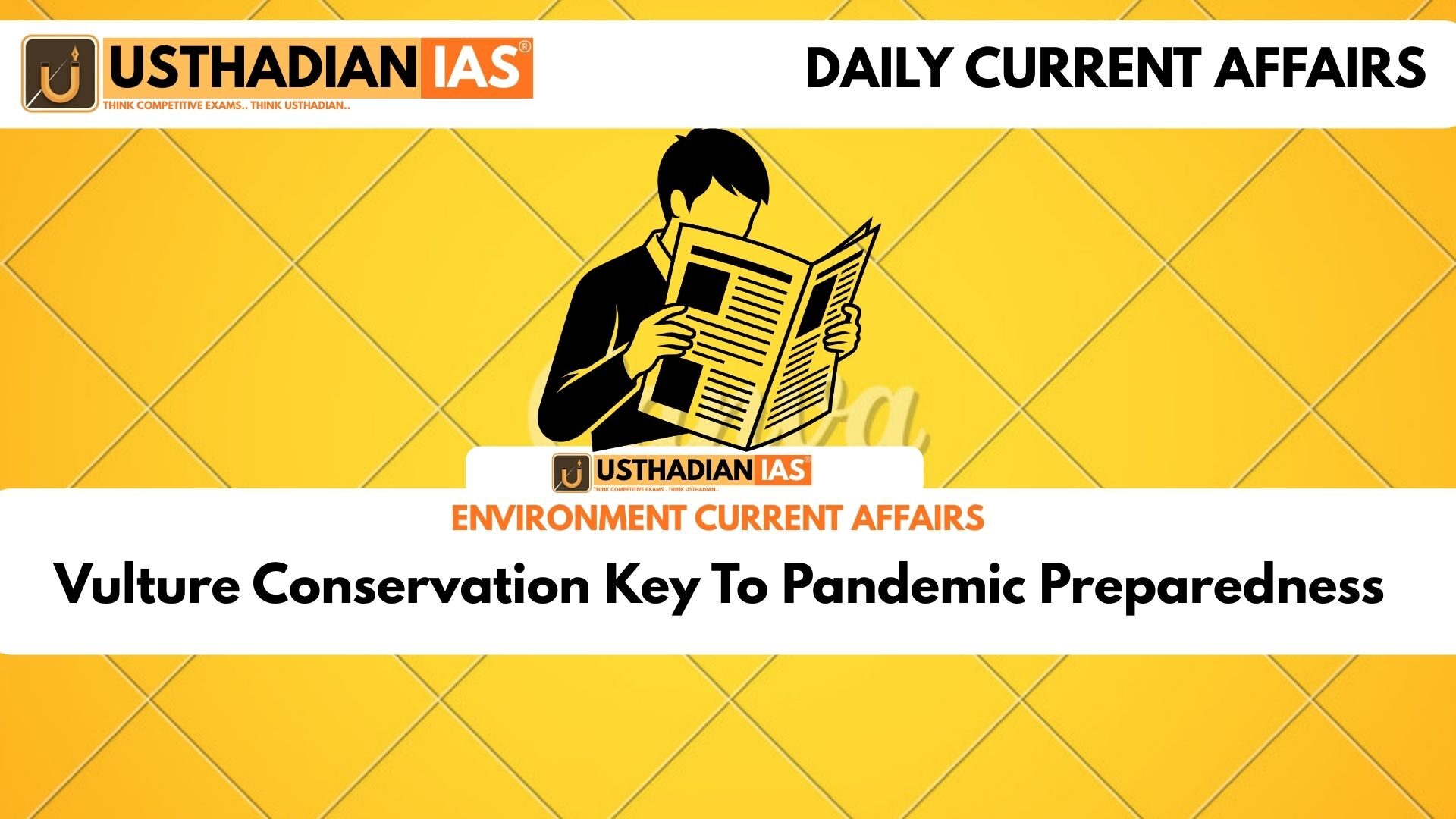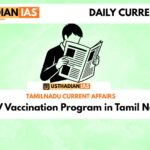Decline of Vultures and Public Health Risk
Vulture Conservation Key To Pandemic Preparedness: India once hosted over 40 million vultures, but populations have declined by more than 95% since the 1990s. The primary cause is the veterinary drug diclofenac, which proved toxic for vultures feeding on treated cattle carcasses. Their disappearance has serious public health consequences as unconsumed carcasses become breeding grounds for pathogens. Static GK fact: India is home to nine species of vultures, out of which four are critically endangered according to the IUCN Red List.
Natural Role in Disease Prevention
Vultures are known as nature’s waste managers. They swiftly consume dead animals, preventing the spread of anthrax, rabies, and botulism. By reducing carcass persistence, they block other scavengers like dogs from feeding on infected remains. This natural disposal system reduces the chance of zoonotic spillover, a critical factor in pandemic preparedness.
Central Asian Flyway and Regional Risks
India’s vultures belong to the Central Asian Flyway (CAF), which stretches across 30 countries. Millions of migratory birds move along this route annually, linking ecosystems across Asia and Europe. Landfills and carcass dumps along CAF corridors can act as disease hotspots. Coordinated regional policies under CAF are vital for biodiversity protection and health security. Static GK Tip: The Central Asian Flyway covers the largest number of migratory waterbird populations in the world.
Barriers to Conservation
Despite efforts, conservation programmes remain underfunded and fragmented. Continued illegal use of diclofenac undermines recovery. Infrastructure challenges such as power line collisions and habitat loss add to mortality. Limited integration of vulture protection into One Health frameworks restricts effective policy execution.
India’s National Action Plan 2016–25
The National Action Plan for Vulture Conservation (2016–25) has focused on breeding centres, banning toxic drugs, and awareness drives. The upcoming phase seeks to embed vulture conservation within pandemic preparedness. Proposed strategies include satellite telemetry, cross-sectoral Decision Support Systems, and community participation in monitoring.
Linking Conservation with Health Security
Integrating vulture protection with health surveillance ensures lower risks of zoonotic disease outbreaks. This aligns with the WHO South-East Asia Regional Health Security Roadmap (2023–27). Investment in safe veterinary drugs, research, and infrastructure upgrades offers a cost-effective alternative to outbreak management. India’s proactive role can establish it as a global leader in biodiversity-driven pandemic prevention.
Static Usthadian Current Affairs Table
Vulture Conservation Key To Pandemic Preparedness:
| Topic | Detail |
| Decline of vultures | 95% decline since 1990s due to diclofenac |
| Species in India | Nine species, four critically endangered |
| Major diseases controlled | Anthrax, rabies, botulism |
| Central Asian Flyway | Connects over 30 countries |
| National Action Plan | 2016–25 with breeding and awareness focus |
| Key threats | Diclofenac, electrocution, habitat loss |
| Proposed measures | Satellite telemetry, decision support system |
| WHO roadmap | 2023–27 health security strategy |
| Ecological role | Natural carcass disposers, prevent spillover |
| Pandemic link | Lower zoonotic risk through vulture conservation |








